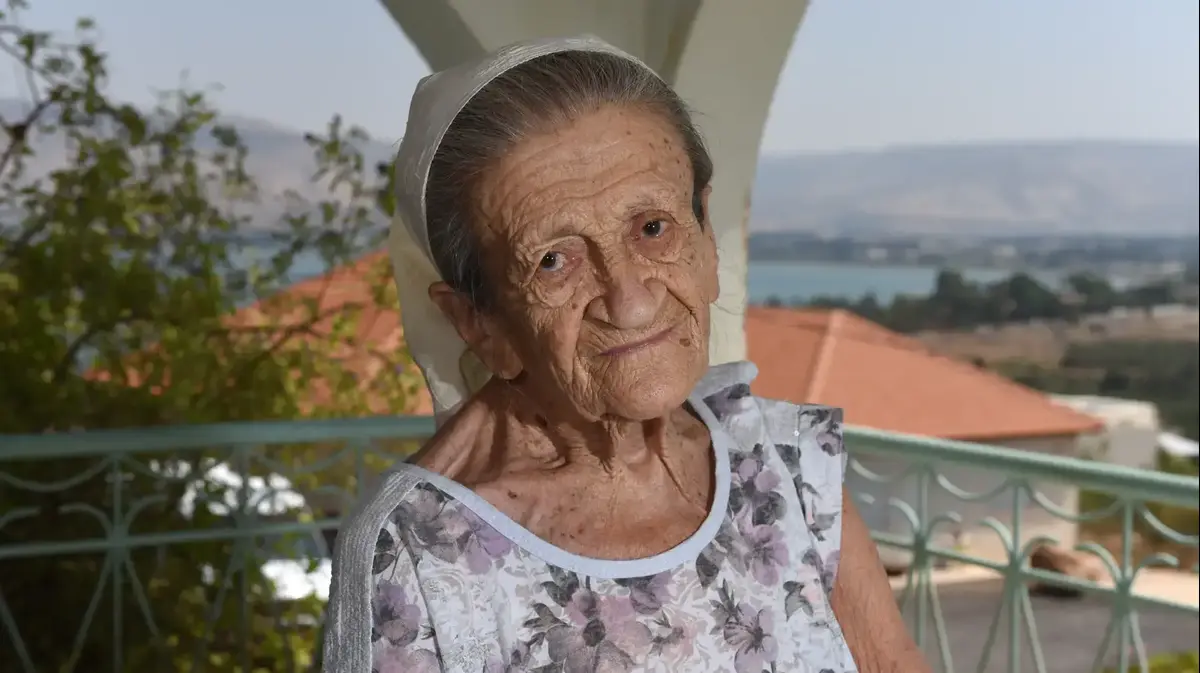Our series on the Marie-Hélène Audoye affair
1. The missing person from the Côte d'Azur
2. The fiancé and the false leads
3. The impasse of the prostitution network
4. The jealous lover, the last target of the investigation
It has now been thirteen days since Marie-Hélène Audoye has given any sign of life.
At the Nice PJ, Chief Inspector Jean-Baptiste Casanova is in charge.
It is he who will carry out or have carried out the first verifications, the first hearings.
From June 4, 1991, in the morning, a search was carried out in the apartment of Cagnes-sur-Mer (Alpes-Maritimes) that the young woman shared with her companion Steven.
The police noticed a certain disorder there and also noted in their report the presence in the bedroom two photos of… Gunilla with a friend.
Surprised to find these pictures of one of her "rivals" in the missing woman, they seize them.
But nothing suspicious is discovered at this stage in the apartment.
No visible traces of struggle, for example.
Witness to another disappearance, nine years earlier
A few hours later, Steven is summoned to the Auvare barracks, the headquarters of the PJ of Nice. His hearing as a "witness" begins at 3 pm. It will last a little over five hours. He unfolds his "story" with Marie-Hélène in front of a police officer, from the first flirtation to the disappearance. He does not hide the clouds that have darkened the last days of their relationship and this last week full of arguments. The loud voices, the doors slamming. He evokes the main cause: his relationship with Gunilla, the Swedish model.
On the other hand, he does not mention in front of the police officer sitting opposite him the existence of the other "extramarital" relationship that he has with Evelyne, his former boss. His account of the last morning also seems contradictory with elements of the file already available to the police. Some schedules don't fit. But above all, the police do not note an oversight in the biography presented by Steven. At the very beginning of his hearing, in response to routine questions in such a situation, he claims to have never been convicted. However, when he was a minor, he did have to deal with justice for moped thefts and burglaries committed in villas on the coast.
Another important piece of information does not appear in what is one of the very first minutes of the case. Indeed, Steven is no stranger to the investigators of the PJ of Nice. He was heard on several occasions following the disappearance of John Berthe, in 1982, in Théoule-sur-Mer, in the Alpes-Maritimes. Steven was at the time a friend of this 13-year-old teenager and, above all, one of the last to have seen him on the day of his disappearance. The young boy and his red bicycle have never been found. The investigation was closed and, despite inconsistencies in his various statements, Steven was never officially suspected at the time.
Nevertheless, this June 4, in the premises of the PJ of Nice, the police officers face them a young man whose girlfriend has vanished and whom they know was also the main witness of another disappearance, nine years ago.
But, at this stage, Steven remains a witness who, at the end of his testimony, admits to being “worried” about the disappearance of Marie-Hélène, and excludes on his part any suicidal impulse.
The untraceable "zero point"
The "Steven track" is left as it is. The investigators are busy putting together the schedules of the various protagonists, and questioning other witnesses. The friends of Steven and Marie-Hélène, and especially those who met them during the Pentecost weekend, are heard. The police are also interviewing Monegasque pharmacists, who are likely to be the last to see Marie-Hélène alive on May 21.
But they will also receive the testimony of the manager of a croissanterie in Cagnes-sur-Mer.
His statements are a first dramatic turn.
The man assures us that he saw Marie-Hélène in the early afternoon, on May 21, on his terrace, accompanied by a woman chatting.
And he is formal.
He even exchanged a few words with her.
Clearly, Marie-Hélène would be returned to her home, in Cagnes-sur-Mer, after her tour of Monaco.
An unforeseen detour.
Why ?
And what could have happened?
Marie-Hélène Audoye, 22, has not given any sign of life since May 21, 1991, but investigators are struggling to determine the “zero point” of her disappearance: Monaco, Cagnes-sur-Mer, Gap?
DR
But, at the same time, new reports reach the PJ of Nice. They come from several people who claim to have seen Marie-Hélène in Gap in the week of her disappearance. On June 18, Principal Inspector Casanova and a colleague set off for Hautes-Alpes. In Gap, they hear these famous witnesses and in particular the manager of a tobacco bar who is sure to have sold cigarettes to a young brunette woman corresponding to the description of Marie-Hélène. In addition, this young woman asked the manager of the bar-tabac the opening hours of pharmacies in the city.
The testimony is taken seriously by the police.
But it seriously complicates the investigations.
Nothing makes it possible to determine the “zero point” of Marie-Hélène's disappearance: Monaco, Cagnes-sur-Mer, Gap?
The three vertices of this Bermuda triangle form a very large perimeter.
Parents conduct research in Spain
In Antibes, Marie-Hélène's parents' apartment already looks like an annex to a police station.
Annie and Jacques, consumed with worry, do not remain inactive.
After the helicopter and car searches of the first days, they continue their own investigation, gather information.
The time of the police and the justice cannot be theirs.
If their daughter is still alive and in danger somewhere, we have to do everything.
And quick.
At the very beginning of August 1991, Annie learns that a witness has come forward to the police. He claims to have seen Marie-Hélène in Tossa de Mar, a seaside resort on the Costa Brava in Spain. In a few hours, with the help of a friend, Annie can explore the campsites and nightclubs of Tossa de Mar and Lloret de Mar, a neighboring town. At this time of year, thousands of tourists flock to the beaches and nightclubs. Among them, many French.
Annie, with her stock of photos of Marie-Hélène, moves heaven and earth on the spot.
Evidence of her daughter's life, however slight, must be dug to the end.
Even if it seems unlikely to anyone who knows her, there is still a possibility that Marie-Hélène has decided to take to the seas, to get away from her disappointed love and the French Riviera.
But the Spanish track is failing.
A strange phone call
Annie and her husband do not give up.
They do not let go of the investigators.
It is their insistence that allows, in September 1991, to launch technical investigations on the fixed telephone line of Steven and Marie-Hélène's apartment in Cagnes-sur-Mer.
On May 21, 1991, several phone calls were made from the apartment.
That of 9:51 a.m. proves the presence of Marie-Hélène.
She's the one calling a friend.
The conversation lasts 26 minutes.
In her hearing before the police, the friend in question confirms that they spoke about the situation of her couple with Steven and that Marie-Hélène confirmed to her that she had just packed her bags to go on tour.
Nothing more.
Nothing to worry about anyway.
The apartment telephone then remains silent until 4:20 p.m.
There, an outgoing call is identified.
It lasts 19 seconds and it went to the direct number of Evelyne, one of Steven's mistresses, in the real estate agency where she works.
Why this phone call?
Why is it so brief?
In November 1991, Steven was questioned on this point during a new hearing.
He evokes a professional conversation with Evelyne on tax matters.
But he confides to the police elements that he had hitherto concealed from them: yes, he had an intimate relationship for several months with his former boss.
A jealous lover
A tumultuous relationship.
Evelyne is obviously very in love with her young lover.
It finances part of his lifestyle.
But she appears very jealous of Marie-Hélène whom she tries to intimidate.
Before her disappearance, the young woman had had her car tires punctured.
And she had strongly suspected this woman who had also entered the apartment of Cagnes and had come to do quite theatrical household scenes in the real estate agency where Steven worked.
So much so that an interview had taken place between Steven, Marie-Hélène and Évelyne, during which the latter had to apologize for what amounted to a form of harassment.
In this audition, Steven does not spare Evelyne.
In any case, he paints an unflattering portrait.
Read alsoPetit Grégory, disappeared from the A6, Lucas Tronche ... these unsolved cases that haunt justice
The jealous lover, who is in contact with Steven the very day of Marie-Hélène's disappearance, can she constitute a serious lead in an investigation which is sorely lacking?
Not for the PJ of Nice which will hear Évelyne only… five years later, in March 1996 exactly.
At the time, the investigators made another choice that would move them away from the circle of Marie-Hélène's relatives.
They will give credit to an apparently rather stringy report.
A lead that will take them into the circles of international prostitution and which has its source in a ready-to-wear store in Juan-les-Pins.















